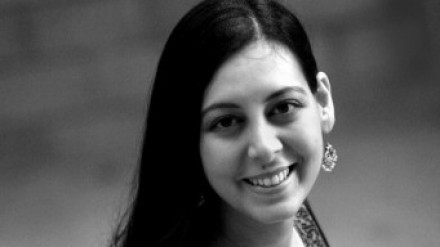
Fascinated by the knowledge that her maternal grandmother had been born Rachel Jacobs in a little-known Jewish community in Mumbai, before ultimately marrying a Muslim and converting to Islam, the grown-up Shepard travels to India to find out more about the life her grandmother left behind. The result of this journey is The Girl From Foreign. Shepard is, at this young age, already quite the Renaissance Woman. By profession she is a documentary filmmaker who has worked on projects for the Discovery Channel.
Her most successful work is the critically-acclaimed documentary The September Issue, a ferociously entertaining account of the production of Vogue magazine’s legendary bumper issue. She started her book in 2003 — breaking off in 2007 for the filming of The Septmber Issue — before publishing it in 2008. When you write a memoir so young, you’re setting yourself up for that thorny question of why anybody would be interested in reading about you in the first place. “I never thought anyone would read my book”, says Shepard, who did not let the disconcerting possibility discourage her from writing it.
“The idea of a young woman’s search for identity in India sounded very clichéd to me and I was not interested.” Shepard is keen to discuss the origins of her memoir and talks about a promise made by her to her dying grandmother. The story, which has been narrated at length in the novel and in other interviews, has the polish of a well-rehearsed script. “And so,” she says, “I arrived in the fall of 2001 with five cameras and lots of film and very little idea of how to accomplish this project.” She was pushed into writing this book by the eminent literary agent Fredrica S. Friedman, despite her protestations of not being an author.
“I explained to her,” Shepard recounts, trying perhaps to dismantle the assumption of authorial vanity which attends an autobiography, “you know, in India everyone has a fascinating family history; this is not unique. It isn’t an interesting topic.” But she set about compiling her memoir from the 18 journals that she had accumulated during her two-year sojourn in India. “The biggest challenge in writing this book was to transform the scribbled thoughts and notes hastily written in my journals over a period of several years into a cohesive story that others might be interested in reading”, says Shepard.
“Then, it was an unusual but exciting challenge to try and sift through my memories to try and discover what tales would best illustrate my story and help illuminate my grandmother’s life.” The book was sold by Friedman to publishers in the US, UK, Europe and India. In the UK, it has been marketed under the title Footpaths in the Painted City, designed to feed the appetite of a voyeuristic western readership. Accordingly, one approaches the book with a healthy amount of skepticism but it is a testament to Shepard’s intelligence and humility that what could have been a pompous cliché is in fact a well-paced read: intimate and often humourous. Above all, it is refreshingly free of sentimentality.
It’s telling that Footpaths in the Painted City is not a title of Shepard’s choosing and she consistently refers to it as The Girl From Foreign. Explaining the title of her book, she says, “While I was living in India I noticed that people would often refer to places outside of India as ‘it’s in Foreign’ or ‘she’s from Foreign’, and that always intrigued me; the idea that ‘Foreign’ was a singular entity, somewhere unfamiliar that you could visit or be from.” Shepard attempts to recreate the Bene Israel community as it was before World War II, when her grandmother was growing up, and as it now is in modern India.
Her task is complicated by the fact that there isn’t much of a community to speak of: a few scattered synagogues, a couple of houses, organisations facilitating the emigration of the remaining handful of Jews to Israel, that seems to be about it. Shepard makes good use of her Stanford degree in filmmaking — the details she picks out convey the feel of a camera panning in luminously intimate images of India. Describing Mumbai, she writes: “In the morning, the road is lined with the compact parcels of sleeping men, arranged in columns alongside the stone walls that border the street, cocooned neatly in white cloths like caterpillars.” An accomplished text, it lacks, perhaps, dimension. When the time comes to move from the merely interesting to the deeply moving, the writing falls apart, with moments of intimacy coming across with stiff discomfort.
Shepard talks about “the importance of storytelling to preserve traditions, history and memory”, however her own research is not presented as a cohesive story or history. The Sadia Shepard at the end of the book is the same equanimous Sadia Shepard that we met on the first page. For someone delving into a complicated family history and purportedly searching for an identity, the writer seems confoundingly free from internal conflict. What she lacks in angst though she makes up for in smarts, displaying a savvy discernment of the importance of her timing. “The choice that my mother made to marry my father was an unusual one in 1973. I think nowadays it’s getting less and less unusual. There are going to be more and more ‘girl from Foreign’ kids and so I think a book like mine even 10 years from now might be entirely uninteresting.
It’s a product of a very specific moment in time.” But her real acumen shows in her selection of future projects which cater to the surge in global interest in Pakistan and Islamic traditions. Shepard has chosen to document the oft-rehashed subject of Sufi music traditions in Pakistan, along with a subject she has skillfully handled in the past, the fashion industry. Positioning herself as a cross-cultural ambassador, she has the advantage of knowing one world very well, and being equipped with the dexterity and tenacity to learn more about this one.
1674793438-0/image-(17)1674793438-0-270x192.webp)

















COMMENTS (5)
Comments are moderated and generally will be posted if they are on-topic and not abusive.
For more information, please see our Comments FAQ